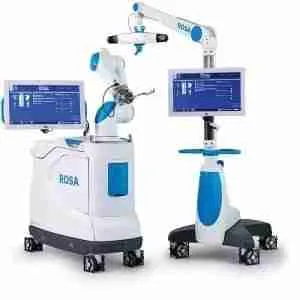Talk with Your Hip and Knee Expert Today!
Choose Dr. Morton as your Joint Replacement Surgeon
- Expert in Robotic Knee and Robotic Hip Replacement Surgery
- Experienced Orthopedic Surgeon
- Most Surgeries Are Same-Day, Outpatient surgeries
- High success rate in treating hip and knee arthritis
- Minimally invasive incision, smaller incisions
- Performs Anterior Total Hip Replacement, Minimally Invasive Total Knee Replacement and Partial Knee Replacements
- Less soft-tissue dissection
- More accurate implant positioning
- Less Postoperative Pain
- Latest Techniques
- Fellowship-trained and specialist in knee replacements
- Takes care of revision hip and knee replacements and complex joint replacements
This is a complete guide to robotic joint replacement.
In this guide you’ll learn all about:
- History of Robotics in Orthopedics
- Benefits and Advantages of Robotics
- Different Orthopedic Robots
- Evidence Behind Robotic Surgery
- Training Required
- How to Prepare for you surgery
So if you want to make sure that you get the most out of your hip or knee surgery, you will get a ton of value from today’s guide.

Content
Role of Robotic-Assistance in Hip and Knee Joint Replacement Surgery
Benefits of Robotic Surgery
The problem with conventional joint replacements
Hip and Knee replacement surgeries are incredibly successful operations. In fact, the Lancet named total hip replacements “the operation of the century.”
However, hip replacements are known to have problems with dislocations and limb length discrepancies. In patients with hip dysplasia or other deformities in their hips often have distorted anatomy. While anterior hip replacements have improved some of these problems, there is still room for improvement.
Knee replacements are considered an incredibly successful surgery. However, 20% of patients are still dissatisfied with their surgery. In studies of total knees performed on patients in Hawaii by excellent orthopedic surgeons using mechanical jigs, only 86% of these implants are placed in the appropriate position.
Keep reading to learn how robotics improves our surgical techniques.
Robotic Surgery History
Knowing the past helps to understand the future.
It’s important to see where we have come from to improve our surgical outcomes.
What are my goals after Surgery?
Traditionally, orthopedic surgeons replace joints manually using special tools. These tools are rigid in their placement of knees and do not allow for easy personalization of placement of the implant.
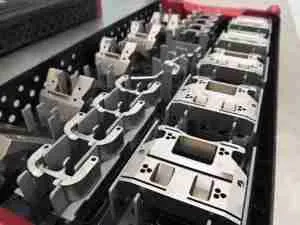
The surgeon has to choose and position the implant using his or her own judgment and visualization. Many surgeons successfully improve their patients’ pain and overall function using this manual method, but there are still some concerns that there is room for error.

For a short period of time, many orthopedic companies were showing computer-navigation knee replacements. Computer-guided knee and hip replacements use markers that are pinned to the patient to determine the alignment of the implant. Navigation proved more accurate with implant positioning compared to mechanical jigs. Unfortunately, this technology is harder to use and has not been able to demonstrate improved outcomes for patients.
Evolution of Robotics in Surgery
More recently, robotic-assisted surgery has become more popular as technology improves. Robotic surgery is a drastic improvement compared to joint replacements performed with computer navigation or mechanical jigs. Surgical robots are more precise, which offers multiple benefits throughout the surgery.
There are three main types of robots: active, haptic, and passive. Active systems attempt to perform the entire operation with minimal input from the surgeon. Studies have not demonstrated that these systems are much better than navigation. Passive and semi-active systems, where the surgeon does the majority of the work and the robot functions as a supportive role, are popular. The robot provides feedback on re-shaping the bone and positioning of the implant. This leads to more precision than the human eye.

Dr. Morton is fellowship-trained in robotic-assisted joint replacements and one of the few surgeons in Hawaii to perform this procedure.
Preoperative Planning
Prior to surgery, some robotic systems require the use of advanced imaging such as a long-leg standing film or a CT scan. This imaging allows for:
- Accurate sizing of implants prior to surgery
- Less guess-work on sizes before
- Shorter operating period
- Preoperative measurement of patient’s deformity prior to surgery
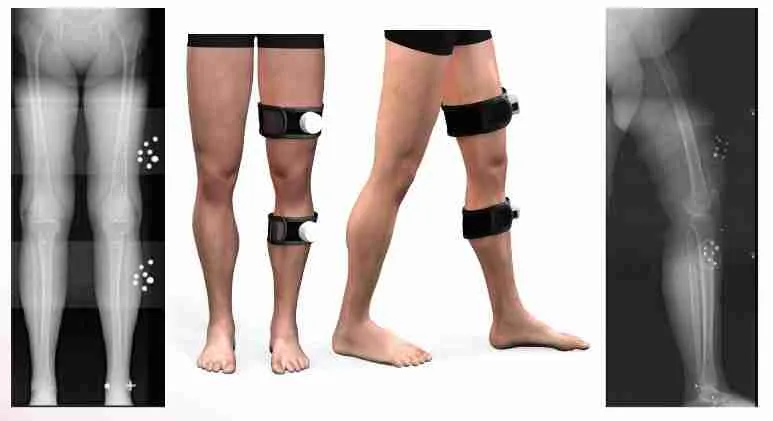
Rosa Knee Replacement uses x-rays with special calibration markers that allow for accurate determination of preoperative alignment and sizing. After these x-rays are obtained, a preoperative plan is personalized to each patient before surgery is even performed.
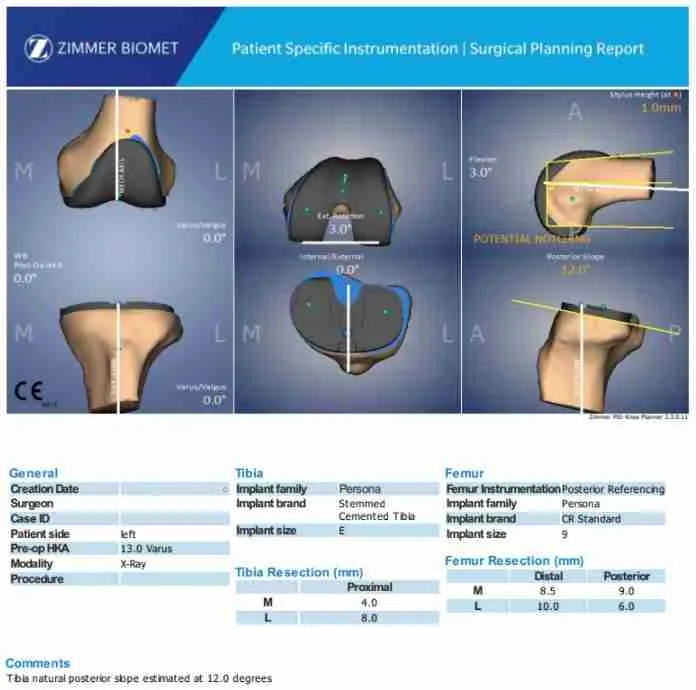
Performing a Robotic Surgery
There are some big differences when utilizing the robot to perform your surgery. Below is the step-by-step process of how a robotic knee is performed.
Stay tuned for a video demonstration.
Insertion of Pins and Calibration of the Robot
Navigation pins allow for the proper utilization of the robot.
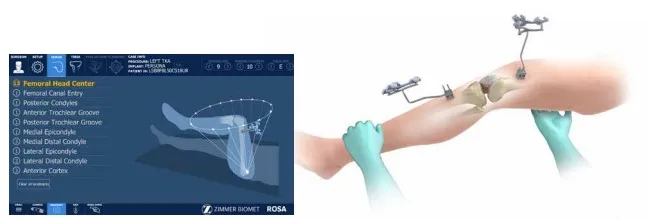
Exposure of the Joint
This is performed much in the same way that is done during a normal knee or hip replacement. Soft-tissue releases that are normally performed – do not have to be done.
Collection of Bone Landmarks
Dr. Morton will trace out the bone landmarks on your knee replacement, obtaining real-time information to map out your knee anatomy.
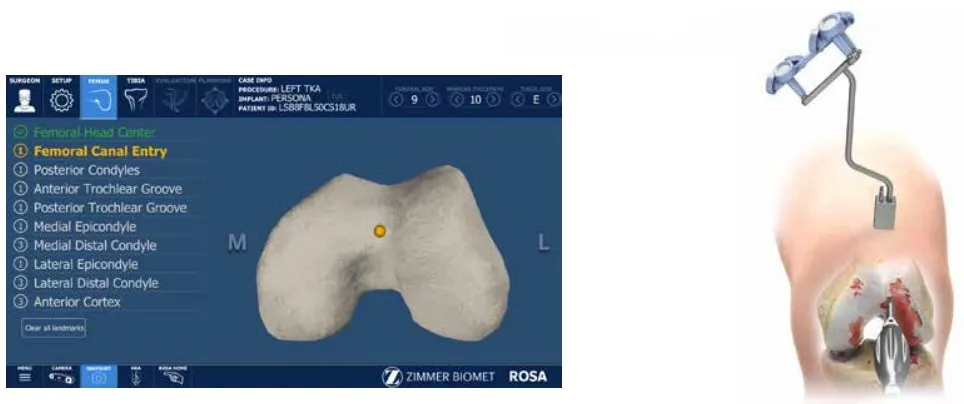
Soft-tissue balancing information
The soft-tissue gap balancing information obtained during a robotic joint provides information not normally evaluated during a knee replacement. This evaluation alerts the surgeon to your specific soft tissue anatomy and helps guide customized, patient-specific implantation of your hip or knee.
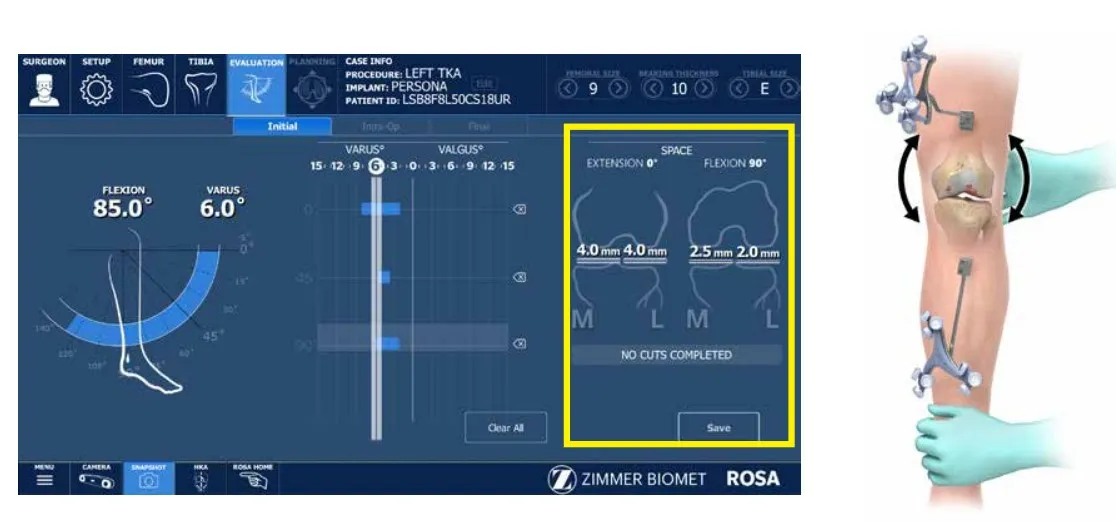
Implant positioning
Your surgery is then planned on a computer screen prior to the actual implantation.
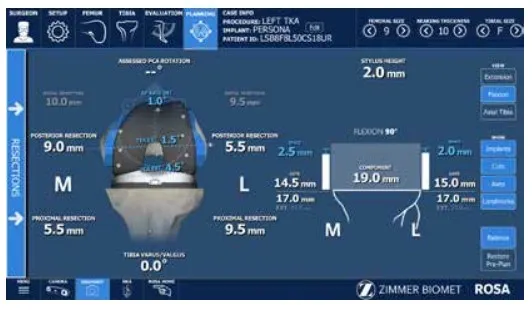
Robotic-assisted Bone Preparation
The robot then guides the cuts through the cutting guides. The robot provides an increased accuracy that cannot be matched by the human eye. These cuts are confirmed to be accurate after they are made.
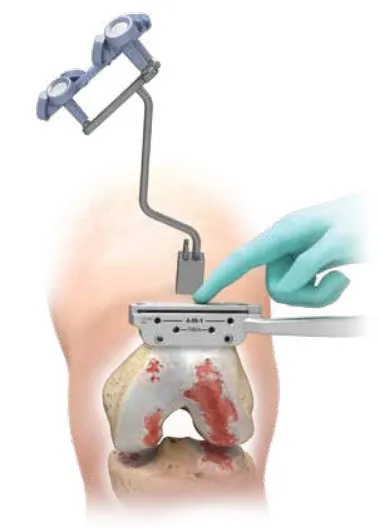

Placing the Implant
Once the bone cuts are made, Dr. Morton will place your new hip or knee in the correct position.
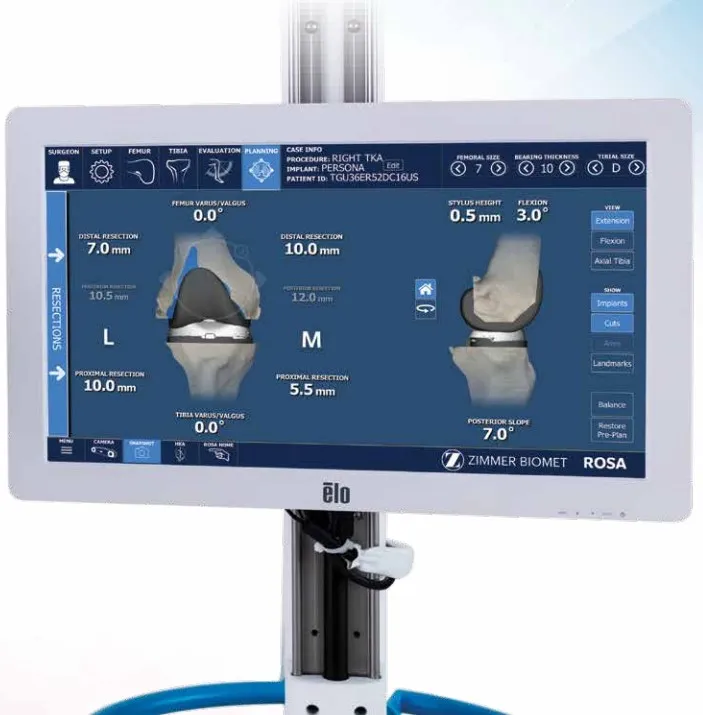
Different Robotic Orthopedic Procedures
Robotic-arm assisted surgery is used partial knee replacements, total knee replacements, and total hip replacements. This technology has made a tremendous improvement in the treatment of patients with arthritis. There are several differences between manual joint replacement and robotic joint replacement.
Follow the links below to see the evidence-based medicine behind these claims.
Partial Knee Replacement
There are two main ways to approach knee replacements: partial knee replacements and total knee replacements. Patients who undergo robotic-assisted partial knee replacements have improved outcomes compared to conventional methods. These implants were implanted with better positioning, limb alignment, and sizing.
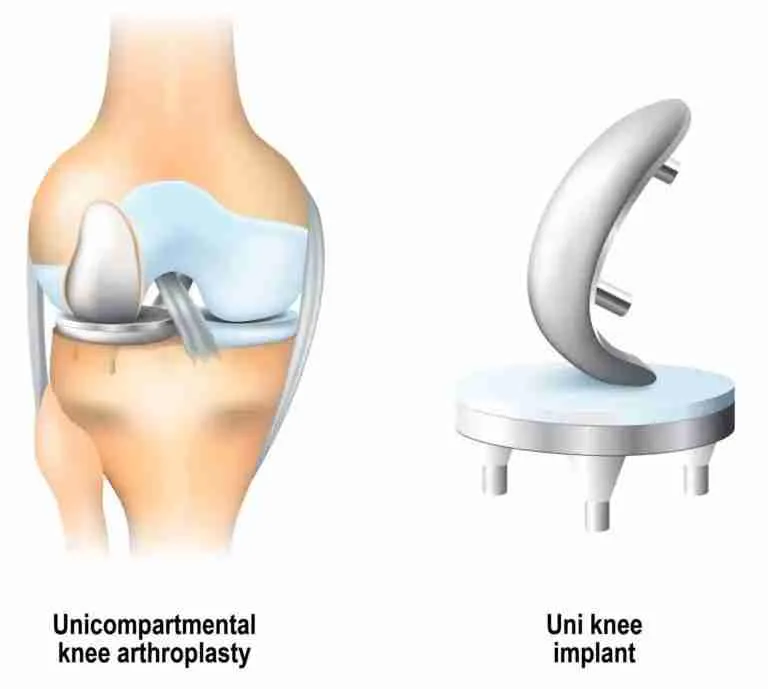
Patients who underwent robotic-assisted joint replacement have less pain and stiffness than their conventional counterparts. Additionally, these patients are less likely to need a revision, their implants last longer and patients are more satisfied with their knee function.
Total Knee Replacement
Patients who undergo a total knee replacement with robotic assistance also have better outcomes. Implants positioned with a robot similarly have improved positioning with better balance with less invasive soft-tissue surgical intervention. Less soft tissue releases lead to a decrease in swelling and pain. This means that they needed less pain medication after the surgery. Patients undergoing a robotic total knee replacement also report better function and movement compared to those who undergo conventional surgery.
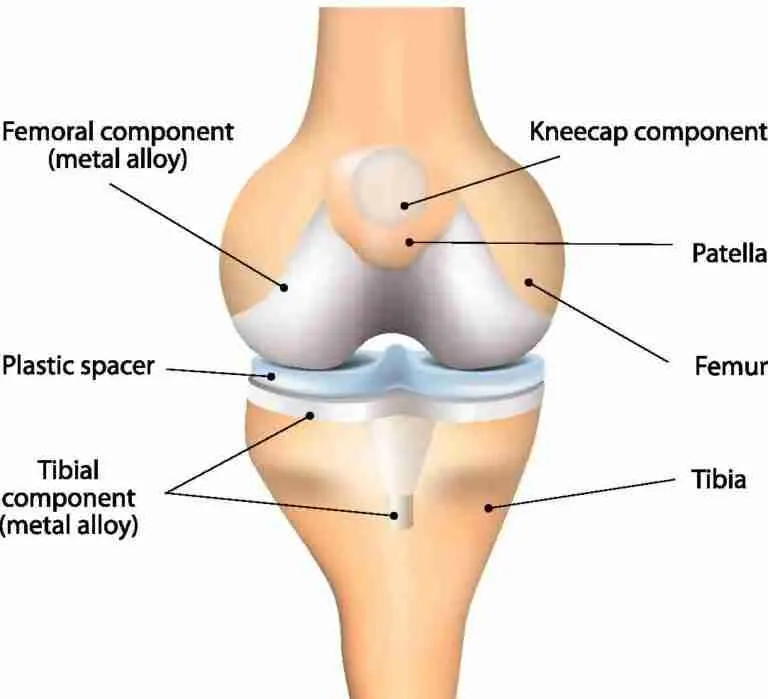
These patients are overall more satisfied than their conventional counterparts. Australian registry data evaluating younger patients undergoing total knee replacements may have a lower requirement for revision if their knee is placed more accurately using robotic assistance.
Total Hip Replacement
Robot-assisted total hip replacements also have several benefits. Hip implants are placed with more precision with robotic assistance.
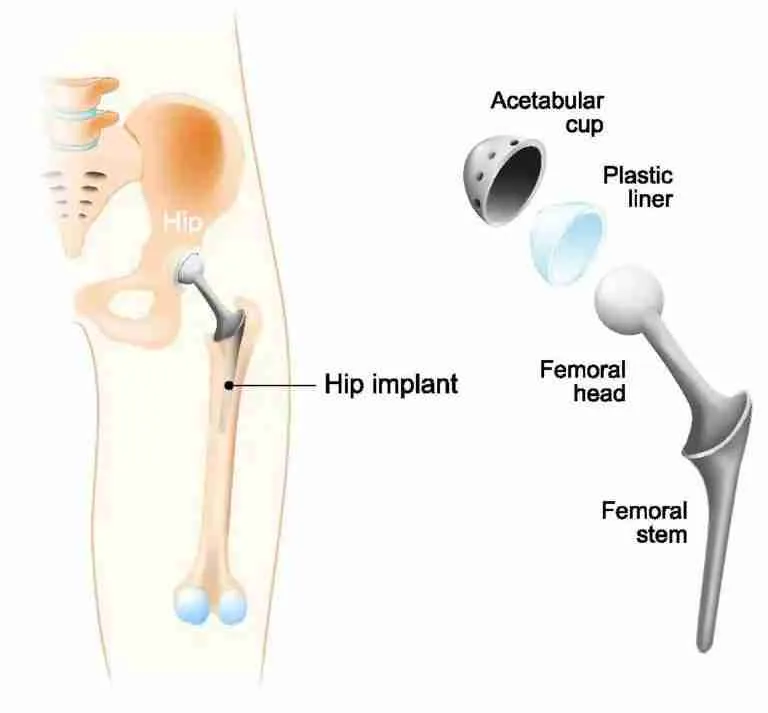
Better implant position leads to a lower likelihood of hip dislocation and limb length discrepancy postoperatively In the short term, both robot-assisted and conventional hip replacements had similar functional scores. Based on these short-term benefits, surgeons believe that these joints may last longer with fewer revisions.
Robotic Systems
There are multiple types of robotic systems. They each have their own advantages and disadvantages. A surgeon or hospital system can choose which system is most appropriate for them and their patients. The three major systems on the market have comparable navigation, limb alignment calculations, and calibration technology allowing for individualized placement of your hip or knee replacement.
Mako
The Stryker Mako robotic system is the first robot that was produced on a large scale in the United States. Before surgery, the Mako robot uses Computed Tomography, otherwise known as a CT scan. CT scans allow for accurate implant positioning preoperatively. Intra-operative ligament balance checking allows for personalized positioning of each hip or knee implant. This allows for precise implant positioning and alignment. The Mako is a haptic system, meaning that the instruments are guided by the surgeon while being used, providing manual feedback during the operation and will cease functioning if the robot is placed in an unsafe zone.
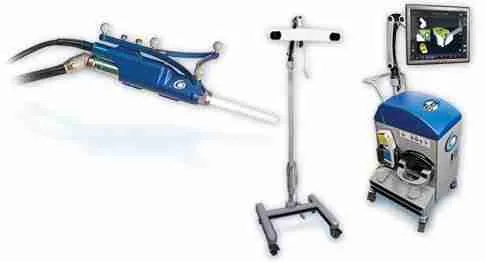
Specialized Training
Dr. Morton is an expert in robotic hip and knee replacements. He has certifications in Rosa, MAKO, and CORI robotics. Understanding robotic technology is a paradigm shift from traditional hip and knee replacements and requires specialist training. This is because robotic surgery requires three-dimensional spatial thinking, understanding where implants need to be placed – without the use of mechanical jigs. This facilitates the perfect placement of the implants.
Many orthopedic surgeons may not be comfortable with this newer surgery because they did not undergo this training and would have to undergo a learning curve on their patients. Few patients would like to undergo surgery by someone who is still learning the technology. Dr. Morton is an expert in performing robotic joint replacements from experts in the field during his fellowship training and is comfortable with the technology.
Conclusion
Early results of several scientific studies have demonstrated that robotic-assisted surgery has increased precision and better outcomes than manual orthopedic surgery for certain joint replacement procedures. Patients who undergo robot-assisted surgeries have less pain, less swelling, and stiffness, and improved function compared to the patients who had conventional surgery. There are benefits to each robotic system available. Ask Dr. Morton about your options in regards to having a robotic-assisted joint replacement surgery.
Frequently Asked Questions about Robotic Joint Replacement (FAQ)
Robotic joint replacement can make bone cuts within 0.5mm of the plan and <1° of expected placement. In comparison, 15-20% of traditional instrumented knee replacements are unable to get within 3° of the expected resection.
Your surgeon is responsible for performing every aspect of the surgery. While the robot assists with improved data collection and bone cuts, the surgeon has to guide the instruments into the right place. The robot is incredibly accurate and prevents surgeons from cutting errors that are imperceptible to the human eye.
Robotic-assisted hip and knee surgery is a newer technology. Not all surgeons were trained in the robot during their training and are not comfortable with learning a new way to perform the same surgery.
Some joint replacement systems require special preoperative imaging (CT scan or x-rays). Dr. Morton does not require additional imaging beyond x-rays for his hip or knee replacement surgeries. During surgery two small incisions are made into your thigh and shin to place the robot trackers.
Pricing programs vary depending on the hospital, implant usage, and physician demand. While a robotic-assisted knee replacement requiring a CT-scan preoperatively will generally cost the hospital an additional $2,000 per patient as reported in some studies, the overall cost to the health system may be decreased due to lower complication rates.
Patients are not expected to pay any more for their robotic hip or knee replacement. Your bill will be the same from the hospital, regardless if you have a robotic-assisted, or traditional knee replacement.
Robotic assistance allows for more accurate placement of your implant, takes into account the positioning of your anatomy, and personalizing the implantation of your knee. Early and mid-term data from studies demonstrate that robotic-placed implants last longer, recover faster, and have lower amounts of pain overall.
Custom implants and customized jigs are a technology that has not demonstrated to have brought significant value for patient outcomes. These devices have not been demonstrated to be more reliable than traditional knee replacements. It is likely because it does not take into account your soft-tissue anatomy at the time of surgery. This is the difference that robotic joint replacements provide.
Robotic joint replacements are a hot-topic in hip and knee replacements. While you may not need a robot to perform your surgery, robotic knee replacements are able to provide a much more accurate positioning of your knee replacements and personalize the implantation to your anatomy. Much like anterior hip replacements are able to position our implants better and improve outcomes, I believe that robotic joint replacements can make the same improvements for knee replacements.
Robotic joint replacement can make bone cuts within 0.5mm of the plan and <1° of expected placement. In comparison, 15-20% of traditional instrumented knee replacements are unable to get within 3° of the expected resection.
Your surgeon is responsible for performing every aspect of the surgery. While the robot assists with improved data collection and bone cuts, the surgeon has to guide the instruments into the right place. The robot is incredibly accurate and prevents surgeons from cutting errors that are imperceptible to the human eye.
Robotic-assisted hip and knee surgery is a newer technology. Not all surgeons were trained in the robot during their training and are not comfortable with learning a new way to perform the same surgery.
Some joint replacement systems require special preoperative imaging (CT scan or x-rays). Dr. Morton does not require additional imaging beyond x-rays for his hip or knee replacement surgeries. During surgery two small incisions are made into your thigh and shin to place the robot trackers.
Pricing programs vary depending on the hospital, implant usage, and physician demand. While a robotic-assisted knee replacement requiring a CT-scan preoperatively will generally cost the hospital an additional $2,000 per patient as reported in some studies, the overall cost to the health system may be decreased due to lower complication rates.
Patients are not expected to pay any more for their robotic hip or knee replacement. Your bill will be the same from the hospital, regardless if you have a robotic-assisted, or traditional knee replacement.
Robotic assistance allows for more accurate placement of your implant, takes into account the positioning of your anatomy, and personalizing the implantation of your knee. Early and mid-term data from studies demonstrate that robotic-placed implants last longer, recover faster, and have lower amounts of pain overall.
Custom implants and customized jigs are a technology that has not demonstrated to have brought significant value for patient outcomes. These devices have not been demonstrated to be more reliable than traditional knee replacements. It is likely because it does not take into account your soft-tissue anatomy at the time of surgery. This is the difference that robotic joint replacements provide.
Robotic joint replacements are a hot-topic in hip and knee replacements. While you may not need a robot to perform your surgery, robotic knee replacements are able to provide a much more accurate positioning of your knee replacements and personalize the implantation to your anatomy. Much like anterior hip replacements are able to position our implants better and improve outcomes, I believe that robotic joint replacements can make the same improvements for knee replacements.









